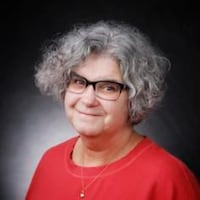Credit: Nick Graham
Credit: Nick Graham
After walking through the grisly crime scene, John Holcomb began documenting his thoughts and progress on the investigation, dictating into an old school Dictaphone, which his assistants later transcribed, according to Karen Holcomb.
The prosecutor’s manuscript, which reveals new details about the case, became the basis of “The Easter Sunday Massacre: A Prosecutor’s Diary.”
“It is a mixture of his thoughts and new interviews; it goes back and forth,” said Holcomb, who married the prosecutor’s son, John W. Holcomb, now the Butler County probate judge.
Holcomb, a former crime reporter for the Journal-News, said she took one look at the manuscript and “thought I have to turn this into a book.”
That was in the mid 1990s. But she got busy with life, including raising two children, and the thick manuscript sat in a drawer. Until the pandemic.
“I needed a project, and remembered the manuscript, ” Holcomb said. Then I started doing my own interviews and my own research. The chapters alternate between the prosecutor’s diary and her own research.
She said she reached out to Ruppert by prison by email and by letter — no response. But many other people have vivid memories of the family and that horrific day.
“A lot of my interviews are with people who knew the Ruppert family,” she said. “Jim Ruppert didn’t have a lot of friends, but everybody knew who he was because he went to the library everyday and he went to the stock brokerage every day and he went to Frisches and ate lunch everyday.”
One interview includes a person who saw Ruppert at the shooting range and said he was an unbelievable marksman.
“He had to be. He had all his guns loaded and when he came down the stairs he was read for business,” Holcomb said. No one Holcomb interviewed had a bad thing to say about the victims.
“It was such a blow to so many people,” she said. “Some of the wounds still haven’t healed even though it has been almost 50 years.”
Her book focuses on Ruppert’s first trial set in what is now the Butler County Historic Courthouse, and eludes to what happened next.
Credit: Brian Horton
Credit: Brian Horton
During that first trial, Ruppert was found guilty of all 11 first-degree (now aggravated) murder charges, but the three judge panel did not unanimously vote to impose the death penalty. So Ruppert was given 11 life sentences.
That conviction was later overturned on a technicality, and Ruppert’s second trial was moved to Hancock County after a change of venue was granted.
In the second trial before a jury, Ruppert was convicted of killing his mother and brother, but not guilty by reason of insanity for the murder of the remaining family members. He was sentenced to life in prison times two.
The book is available now through Amazon.
Credit: Greg Lynch
Credit: Greg Lynch
About the Author



